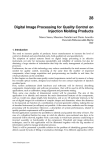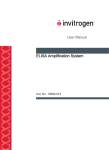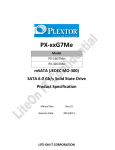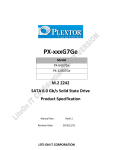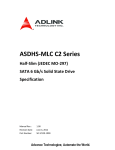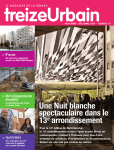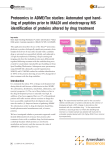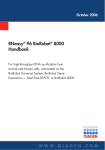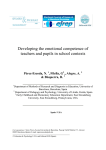Download CY-1252 NMNAT Colorimetric Assay Kit
Transcript
On ly! NMNAT Colorimetric Assay Kit User’s Manual For Research Use Only, Not for use in diagnostic procedures Quantitative test kit for nicotinamide mononucleotide adenylyltransferase activity CycLex NMNAT Colorimetric Assay Kit For 100 assays Pu rp Intended Use................................................1 Storage.........................................................1 Introduction..................................................2 Principle of the Assay..................................2 Materials Provided.......................................3 Materials Required but not Provided...........3 Precautions...................................................4 Detailed Protocol..........................................5-12 Evaluation of Results...................................13 Cautions.......................................................13 Assay Characteristics...................................14 Troubleshooting...........................................14 Reagent Stability..........................................14 Protocol for immunoprecipitation................15 Example of Test Results...............................16-18 References....................................................18 Related Products..........................................19 os e Cat# CY-1252 ce Intended Use en The CycLex Research Product CycLex NMNAT Colorimetric Assay Kit detects nicotinamide mononucleotide adenylyltransferase (NMNAT) activity in recombinant NMNAT1 or endogenous NMNAT1 immunoprecipitated from cell extract. Primarily, the CycLex Research Product CycLex NMNAT Colorimetric Assay Kit is designed for the rapid and sensitive evaluation of NMNAT1 inhibitors or activators using recombinant NMNAT1. Since this kit is based on NAD+ detection system, it is not possible to directly detect NMNAT activity in crude cell extract in which NAD+ concentration is relatively high. er Applications for this kit include: 1) Screening inhibitors or activators of NMNAT1. 2) Detecting the effects of pharmacological agents on NMNAT1. ef This assay kit is for research use only and not for use in diagnostic or therapeutic procedures. Storage rR • Upon receipt store all components at -70°C. • Don’t expose reagents to excessive light. Fo Cat#: CY-1252 1 Version#: 140604 On ly! NMNAT Colorimetric Assay Kit User’s Manual For Research Use Only, Not for use in diagnostic procedures Introduction os e Nicotinamide mononucleotide adenylyltransferase 1 (NMNAT1) (EC 2.7.7.1) is a central enzyme in NAD biosynthesis, transferring the adenylyl moiety of ATP to nicotinamide mononucleotide (NMN) or nicotinic acid mononucleotide (NaMN) resulting in the formation of NAD or NaAD and the release of pyrophosphate. As this reaction is reversible, the enzyme may in principle be used to form ATP and NMN from NAD and pyrophosphate. This enzyme could be a potential target for therapeutical applications, because its activity is rather low in tumor cells. The deduced protein contains an N-terminal nuclear localization signal. Immunofluorescence microscopy localized endogenous NMNAT1 to the nucleus in human fibroblasts and in a hepatoma cell line. It was demonstrated that NMNAT1 inhibited recombinant human poly(ADP-ribose) polymerase-1 by about 35%, and it completely prevented the formation of branched ADP-ribose polymers. Principle of the Assay Pu rp Since it is very simple to measure and it can be performed at a low price, the measurement of NMNAT1 activity in most laboratories is possible if they are equipped with a microtiter plate reader. Considering that the use of fully automatic apparatus to monitor the absorbance has become widespread, NMNAT1 activity measurement, which could not be made by the conventional method, is now possible with the CycLex NMNAT Colorimetric Assay Kit using the same equipment. This new method of measurement shall dramatically raise the efficiency of inhibitor screening and biochemical analysis of this enzyme. Measuring Principle of The CycLex NMNAT Colorimetric Assay Kit NADH NADH WST-1 formazan er WST-1 en ce NMN (nicotinamide mononucleotide) + ATP NMNAT (nicotinamide mononucleotide adenylyltransferase ) NAD (nicotinamide adenine dinucleotide) ADH (Alcohol dehydrogenase) Diaphorase rR ef Measure OD at 450 nm Fo Cat#: CY-1252 2 Version#: 140604 Materials Provided Each kit contains Quantity 1.2 mL x 1 1 mL x 1 1 mL x 1 Storage -70°C -70°C -70°C 20 µL x 1 -70°C 200 µL x 1 200 µL x 1 200 µL x 1 1 mL x 1 1 -70°C -70°C -70°C -70°C Room temp. Pu rp os e Materials ① 10X NMNAT Assay Buffer ② 10X NMN* ③ 10X ATP ④ 100X recombinant NMNAT1** (ca. 1.5 mg/ml) ⑤ 50X WST-1 ⑥ 50X ADH (alcohol dehydrogenase) ⑦ 50X Diaphorase ⑧ 10X EtOH ⑨ Instruction manual On ly! NMNAT Colorimetric Assay Kit User’s Manual For Research Use Only, Not for use in diagnostic procedures * Nicotinamide mononucleotide ** Human NMNAT1 (nicotinamide mononucleotide adenylyltransferase 1) expressed in E. coil. Materials Required but not Provided • Microplate for ELISA ce • Plate reader capable of measuring absorbance in 96-well plates at dual wavelengths of 450 nm/540 nm. Dual wavelengths of 450/550 or 450/595 nm can also be used. The plate can also be read at a single wavelength of 450 nm, which will give a somewhat higher reading. • Pipettors: 2-20 µL, 20-200 µL and 200-1000 µL precision pipettors with disposable tips. • Microplate shaker en • Multi-channel pipette • Deionized water of the highest quality er • 500 or 1000 mL graduated cylinder • Reagent reservoirs ef • NAD+: NAD+ (β-Nicotinamide adenine dinucleotide hydrate) is from Sigma Cat.# N7004. Prepare fleshly 5 µM solution in H2O from 1 mM stock solution (in H2O). Discard any unused 5 µM NAD+ (Optional). rR • Gallotannin (Tannic acid): Gallotannin is from Sigma Cat.# T3437. Prepare 0.5 mM solution in H2O (Optional). Fo Cat#: CY-1252 3 Version#: 140604 On ly! NMNAT Colorimetric Assay Kit User’s Manual For Research Use Only, Not for use in diagnostic procedures Precautions • Please thaw all reagents on crushed ice before use. • Please avoid repeated freezing and thawing of the recombinant NMNAT1 in this kit. There is a possibility that the enzyme activity may be inactivated. Aliquot to 25-50 µL and store at –70°C • Please avoid mixing of any reagents containing SH group like DTT or reduced glutathione, or alkyl amine in the sample that will interfere this assay. os e • Do not use kit components beyond the indicated kit expiration date. • Rinse all detergent residue from glassware. • Use deionized water of the highest quality. • Do not mix reagents from different kits. Pu rp • Do not mouth pipette or ingest any of the reagents. • Do not smoke, eat, or drink when performing the assay or in areas where samples or reagents are handled. rR ef er en ce • Biological samples may be contaminated with infectious agents. Do not ingest, expose to open wounds or breathe aerosols. Wear protective gloves and dispose of biological samples properly. Fo Cat#: CY-1252 4 Version#: 140604 On ly! NMNAT Colorimetric Assay Kit User’s Manual For Research Use Only, Not for use in diagnostic procedures Detailed Protocol Description of assay system Pu rp os e The CycLex NMNAT Colorimetric Assay Kit can measure the enzyme activity of nicotinamide mononucleotide adenylyltransferase (NMNA) by an enzyme-coupled reaction as shown in “Measuring Principle of The CycLex NMNAT Colorimetric Assay Kit” at page 2. In this method, NMNAT1 converts NMN to NAD+. Resultant NAD+ can be measured by enzyme cycling reaction using alcohol dehydrogenase (ADH), diaphorase and WST-1. Since the reaction is not stopped, it is necessary to monitor absorbance of WST-1-formazan at 450 nm at regular intervals after the reaction is initiated, and to determine reaction velocity. The CycLex NMNAT Colorimetric Assay Kit can measure the enzyme activity of NMNAT1 with two different measuring methods; the 1-Step Method and the 2-Step Method. The 1-Step Method is accomplished by mixing with three enzymes, i.e. NMNAT1, alcohol dehydrogenase and diaphorase. Since two coupled reactions are promoted simultaneously with NMNAT1 enzyme reaction, detection of this method is less sensitive than the 2-Step Method. Conversely, the 2-Step Method is begun by initiating reactions of NMNAT1 within a set time period to produce NDA+ from NMN and ATP; then in the second step, followed by adding ADH, diaphorase and WST-1, the resultant WST-1-formazan is formed by NAD/NADH cycling enzyme reaction. Preparation Method for Assay Reagents Place all reagents in ice to thaw. Use them after they thaw completely. #1. 1-Step Assay Buffer (Quantity Required: 50 µL/assay) ・Mix following reagents and put on ice. ・This 1-Step Assay Buffer should be used within 30 min after prepared. Discard any unused 1-Step Assay Buffer after use. 10 µL ② 10X NMN 10 µL ③ 10X ATP 10 µL ⑤ 50X WST-1 2 µL ⑥ 50X ADH 2 µL ⑦ 50X Diaphorase 2 µL ⑧ 10X EtOH 10 µL dH2O 4 µL er ① 10X NMNAT Assay Buffer ef rR Fo Cat#: CY-1252 Volume en ce Reagents Total 50 µL 5 Version#: 140604 On ly! NMNAT Colorimetric Assay Kit User’s Manual For Research Use Only, Not for use in diagnostic procedures #2. 2-Step Assay Buffer-I (Quantity Required: 30 µL/assay) ・Mix following reagents and put on ice. ・This 2-Step Assay Buffer-I should be used within 30 min after prepared. Discard any unused 2-Step Assay Buffer-I after use. Assay reagents Volume 10 µL ② 10X NMN 10 µL ③ 10X ATP 10 µL os e ① 10X NMNAT Assay Buffer Total 30 µL Pu rp #3. 2-Step Assay Buffer-II (Quantity Required: 20 µL/assay) ・Mix following reagents and put in ice. ・This 2-Step Assay Buffer-II should be used within 30 min after prepared. Discard any unused 2-Step Assay Buffer-II after use. Assay reagents ⑤ 50X WST-1 ⑥ 50X ADH Volume 2 µL 2 µL ⑦ 50X Diaphorase 2 µL ⑧ 10X EtOH 10 µL ce dH2O Total 4 µL 20 µL en #4. Prepare 1X NMNAT Assay Buffer by diluting the 10X NMNAT Assay Buffer 10-fold with deionized (distilled) water at the time of assay. er #5. Prepare 1X recombinant NMNAT1 by diluting the 100X recombinant NMNAT1 100-fold with 1X NMNAT Assay Buffer at the time of assay. rR ef Prepare appropriate volume for your assay. Discard any unused 1X recombinant NMNAT1 after diluted. Fo Cat#: CY-1252 6 Version#: 140604 NMNAT1 Assay Procedures 1. 1-Step Method On ly! NMNAT Colorimetric Assay Kit User’s Manual For Research Use Only, Not for use in diagnostic procedures Test sample Positive control No enzyme control 10 µL - - - 2 µL dH2O 40 µL 48 µL #1. 1-Step Assay Buffer (see page 5) 50 µL Your enzyme sample (Test sample) 1X recombinant NMNAT1 - 50 µL os e Assay reagents 50 µL 50 µL 1. Following the above table, add 10 µL of “Your enzyme sample” or 2 µL of 1X recombinant NMNAT1 and dH2O to the well of microplate and mix well. Next, initiate reaction by adding 50 µL of #1. 1-Step Assay Buffer to each well and mix thoroughly. Incubate at 30℃. 2. 2-Step Method Pu rp 2. Monitor the absorbance at 450 nm for 60 min at 5 min intervals using a microtiter plate reader. Measure and calculate the rate of reaction while the reaction velocity remains constant. 1st reaction; Conversion of nicotinamide to NAD Assay reagents Your enzyme sample (Test sample) ce 1X recombinant NMNAT1 dH2O Positive control No enzyme control 10 µL - - - 2 µL - 60 µL 68 µL 70 µL 30 µL 30 µL 30 µL en #2. 2-Step Assay Buffer-I (see page 6) Test sample 1. Following the above table, add “Your enzyme sample” or 2 µL of 1X recombinant NMNAT1 and dH2O to each well of the microplate. Finally, initiate reaction by adding 30 µL of #2. 2-Step Assay Buffer-I to each well and mix thoroughly to initiate reaction. Incubate at 30℃ for 60 min. er 2nd reaction; Measurement of NAD ef 2. Add 20 µL of #3. 2-Step Assay Buffer-II (see page 6) to each well of the microplate. and mixing thoroughly. Incubate at 30℃. rR 3. Monitor the absorbance at 450 nm for 30 min at 5 min intervals using a microtiter plate reader. Measure and calculate the rate of reaction while the reaction velocity remains constant. Fo Cat#: CY-1252 7 Version#: 140604 3. Special considerations when screening inhibitors or activators On ly! NMNAT Colorimetric Assay Kit User’s Manual For Research Use Only, Not for use in diagnostic procedures Please consider the following in order to correctly estimate the inhibitory effect on NMNAT enzymatic activity. It is necessary to conduct: (1) “Vehicle Control” at least once for the first experiment, (2) “Inhibitor Control” at least once for the first experiment, and (3) “Test Chemical”, as indicated on the following table. When test chemicals cause an inhibitory effect on NMNAT1 enzyme activity, the level of A450 is weakened as compared with “Vehicle control”. The high level of A450 is not observed in “Inhibitor control” (usually A450<0.3 at 30 min reaction point). I. 1-Step Method Test chemical Vehicle control Inhibitor control 1X recombinant NMNAT1 2 µL 2 µL 2 µL 50X Inhibitor candidate 2 µL - - 2 µL - - 2 µL - Gallotannin (0.5 mM)* - Pu rp Vehicle for Inhibitor candidate os e Assay reagents dH2O #1. 1-Step Assay Buffer 46 µL 46 µL 46 µL 50 µL 50 µL 50 µL * Gallotannin (0.5 mM): Not provided in this kit. See page 3. 1. Following the above table, add 2 µL of 1X recombinant NMNAT1, dH2O and 50X Inhibitor candidate or Vehicle for Inhibitor candidate or Gallotannin (0.5 mM) to each well of microplate and mix well. Next, initiate reaction by adding 50 µL of #1. 1-Step Assay Buffer to each well and mix thoroughly. Incubate at 30℃. rR ef er en ce 2. Monitor the absorbance at 450 nm for 60 min at 5 min intervals using a microtiter plate reader. Measure and calculate the rate of reaction while the reaction velocity remains constant. Fo Cat#: CY-1252 8 Version#: 140604 II. 2-Step Method Test chemical Vehicle control Inhibitor control 1X recombinant NMNAT1 2 µL 2 µL 2 µL 50X Inhibitor candidate 2 µL - Vehicle for Inhibitor candidate - 2 µL Gallotannin (0.5 mM)* - - dH2O 66 µL 66 µL 66 µL #2. 2-Step Assay Buffer-I 30 µL 30 µL 30 µL * Gallotannin (0.5 mM): Not provided in this kit. See page 3. - - 2 µL os e Assay reagents On ly! NMNAT Colorimetric Assay Kit User’s Manual For Research Use Only, Not for use in diagnostic procedures Pu rp 1. Following the above table, add 2 µL of 1X recombinant NMNAT1, dH2O and 50X Inhibitor candidate or Vehicle for Inhibitor candidate or Gallotannin (0.5 mM) to each well of the microplate. Next, initiate reaction by adding 30 µL of #2. 2-Step Assay Buffer-I to each well and mix thoroughly to initiate reaction. Incubate at 30℃ for 60 min. 2. Add 20 µL of #3. 2-Step Assay Buffer-II to each well of the microplate and mix thoroughly. Incubate at 30℃. rR ef er en ce 3. Monitor the absorbance at 450 nm for 30 min at 5 min intervals using a microtiter plate reader. Measure and calculate the rate of reaction while the reaction velocity remains constant. Fo Cat#: CY-1252 9 Version#: 140604 On ly! NMNAT Colorimetric Assay Kit User’s Manual For Research Use Only, Not for use in diagnostic procedures 4. Assay control 1. For Inhibitor screening The CycLex NMNAT Colorimetric Assay kit measures the NMNAT1 enzyme activity by an enzyme-coupled reaction where three enzymes are involved; NMNAT1, ADH, and diaphorase. If test chemicals have an inhibitory effect on one of these enzymes, the signal will be reduced. If there is such a possibility, please carry out the experiment of NAD/NADH recycling assay in the following table to ascertain which enzyme is target of the test chemical. Test chemical Vehicle control NAD+ (5 µM)* 10 µL 10 µL 50X Inhibitor candidate 2 µL Vehicle for Inhibitor candidate 68 µL #3. 2-Step Assay Buffer-II Pu rp dH2O os e Assay reagents 20 µL - 2 µL 68 µL 20 µL * NAD+: Not provided in this kit. See page 3. 1. Following the above table, add, 10 µL of NAD+ (5 µM), dH2O and 50X Inhibitor candidate or Vehicle for Inhibitor candidate to each well of microplate and mix well. Next, initiate reaction by adding 20 µL of #3. 2-Step Assay Buffer-II to each well and mix thoroughly. Incubate at 30℃. ce 2. Monitor the absorbance at 450 nm for 60 min at 5 min intervals using microtiter plate reader. Measure and calculate the rate of reaction while the reaction velocity remains constant. rR ef er en When there is an inhibitory effect of test chemical on NAD/NADH recycling reaction, A450 will not increase. Fo Cat#: CY-1252 10 Version#: 140604 On ly! NMNAT Colorimetric Assay Kit User’s Manual For Research Use Only, Not for use in diagnostic procedures II. For NMNAT1 activity assay in an immunoprecipitate Since NAD+ level in cells is relatively high, around several hundreds micromolar concentration, NAD+ might mix easily with purified NMNAT1 from various cells or an immunoprecipitate using the specific antibody against NMNAT1. Such contaminated NAD+ in the test sample causes a false positive result by initiating NAD/NADH cycling enzyme reaction. If there is such a possibility, please carry out the experiment of NAD/NADH recycling assay in the following table. Your enzyme sample (Test sample) NAD+ (5 µM) Test sample NAD+ control 10 µL - - 10 µL dH2O 70 µL #3. 2-Step Assay Buffer-II 20 µL * NAD+: Not provided in this kit. See page 3. os e Assay reagents 70 µL 20 µL Pu rp 1. Following the above table, add 10 µL of “Your enzyme sample” or 10 µL of NAD+ (5 µM) and dH2O to each well of microplate and mix well. Next, initiate reaction by adding 20 µL of #3. 2-Step Assay Buffer-II to each well and mix thoroughly. Incubate at 30℃. 2. Monitor the absorbance at 450 nm (A450) for 60 min at 5 min intervals using a microtiter plate reader. Measure and calculate the rate of reaction while the reaction velocity remains constant. rR ef er en ce When there is contaminated NAD+ in the test sample, A450 will increase compared to NAD+ control. Fo Cat#: CY-1252 11 Version#: 140604 III. For NMNAT1 activity assay in an immunoprecipitate (Alternative method) On ly! NMNAT Colorimetric Assay Kit User’s Manual For Research Use Only, Not for use in diagnostic procedures In order to measure the activity of NMNAT1 correctly, it is necessary to conduct the control experiments for “No enzyme control” and “No NMN control” at least once in addition to “Your enzyme sample,” as indicated in the below table of assay method. Although A450 increases in “Test sample” when NMNAT enzyme activity is in the sample, the increase in A450 is not observed in “No enzyme control” and “No NMN control”. Positive control ① 10X NMNAT Assay Buffer 10 µL 10 µL 10 µL 10 µL ② 10X NMN 10 µL 10 µL 10 µL - ③ 10X ATP 10 µL 10 µL 10 µL 10 µL #3. 2-Step Assay Buffer-II (see page 6) 20 µL 20 µL 20 µL 20 µL dH2O 40 µL 48 µL 50 µL 50 µL 10 µL - - 10 µL - 2 µL - - 1X recombinant NMNAT1 Pu rp Your enzyme sample (Test sample) No enzyme control No NMN control os e Test sample Assay reagents 1. Following the above table, add all reagents (① 10X NMNAT Assay Buffer to dH2O) to each well of microplate and mix well. Next, initiate reaction by adding 10 µL of “Your enzyme sample” or 2 µL of 1X recombinant NMNAT1 to each well and mix thoroughly. Incubate at 30℃. ce 2. Monitor the absorbance at 450 nm for 30 min at 5 min intervals using a microtiter plate reader. Measure and calculate the rate of reaction while the reaction velocity remains constant. en The difference in the reaction velocity between “Test sample” and “No NMN control” indicates the NMNAT activity. rR ef er Note: Duplicate measurement is strongly recommended. Fo Cat#: CY-1252 12 Version#: 140604 Evaluation of Results Analysis of Kinetics Time course curve os e 1. Run reactions as described in the Detailed Protocol. 2. Subtract A450 at the 0 time from all reaction time points. 3. Plot A450 versus reaction time. 4. Determine the reaction time range in which the increase in A450 is linear. 5. Calculate activity: On ly! NMNAT Colorimetric Assay Kit User’s Manual For Research Use Only, Not for use in diagnostic procedures A450 of Test Sample Activity (reaction velocity) = Reaction time (min.) Pu rp Note: Usually, the linear range is from 10 to 30 min. This value is variable depending on reaction conditions and storage/handling of the recombinant NMNAT1. Decreasing the amount of recombinant NMNAT1 in the assay may help to lengthen the time range. Cautions 1. Since this kit is based on NAD+ detection system, it is not possible to detect NMNAT1 activity in crude cell extract in which NAD+ concentration is relatively high. Please use an immunoprecipitate as a test sample using the specific antibody against NMNAT1. ce 2. Contaminated NAD+ in the test sample causes a false positive result by initiating NAD/NADH cycling enzyme reaction. Please confirm no NAD+ in the test sample according to “4. Assay control”, page 11 or 12. 3. Duplicate measurement is strongly recommended for accurate measurement of NMNAT1 activity. en 4. Although we suggest to conduct experiments as outlined in “Protocol for immunoprecipitation” on page 15, the optimal experimental conditions will vary depending on the parameters being investigated, and must be determined by the individual user. rR ef er For research use only, not for use in diagnostic or therapeutic procedures. Fo Cat#: CY-1252 13 Version#: 140604 On ly! NMNAT Colorimetric Assay Kit User’s Manual For Research Use Only, Not for use in diagnostic procedures Assay Characteristics The CycLex Research Product CycLex NMNAT Colorimetric Assay Kit has been shown to detect the activity of nicotinamide phosphoribosyltransferase activity in recombinant NMNAT1 or an immunoprecipitate using the specific antibody against NMNAT1. The assay shows good linearity of sample response. The assay may be used to follow the purification of NMNAT1. Troubleshooting os e 1. When test chemicals have an inhibitory effect on ADH or diaphorase, precise inhibitory effect on NMNAT1 enzyme activity cannot be measured. 2. The recombinant NMNAT1 should be run in duplicate, using the protocol described in the Detailed Protocol. Incubation times or temperatures significantly different from those specified may give erroneous results. Pu rp 3. Poor duplicates indicate inaccurate dispensing. If all instructions in the Detailed Protocol were followed accurately, such results indicate a need for multi-channel pipettor maintenance. Reagent Stability rR ef er en ce All of the reagents included in the CycLex Research Product CycLex NMNAT Colorimetric Assay Kit have been tested for stability. Reagents should not be used beyond the stated expiration date. Upon receipt, all kit reagents should be stored at -70°C. Fo Cat#: CY-1252 14 Version#: 140604 Protocol for immunoprecipitation Solutions and Reagents Note: Prepare solutions with Milli-Q or equivalently purified water. On ly! NMNAT Colorimetric Assay Kit User’s Manual For Research Use Only, Not for use in diagnostic procedures os e Cell Lysis Buffer (1X): 20 mM Tris (pH 8.0), 250 mM NaCl, 1 mM EDTA, 1 mM EGTA, 1% Triton X-100, 1 mM DTT and protease inhibitor cocktail. Protein A Agarose Beads: Add 5 mL of 1X PBS to 1.5 g of Protein A Agarose Beads. Shake 2 hours at 4°C; spin down. Wash the pellet twice with PBS. Resuspend beads in 1 volume of PBS. (Can be stored for 2 weeks at 4°C) 10X TBS (Tris-buffered saline): For 1 liter of 10X TBS, use 24.2 g Tris base and 80 g NaCl. Adjust pH to 7.6 with HCl (use at 1X). Wash Buffer TBS/T: 1X TBS, 0.1% Tween-20 Preparing Cell Lysates 1. Aspirate media. Treat cells by adding fresh media containing test compound for desired time. Pu rp 2. To harvest cells under nondenaturing conditions, remove media and rinse cells once with ice-cold PBS. 3. Remove PBS and add 0.5 mL 1X ice-cold Cell Lysis Buffer to each plate (10 cm dish) and incubate the plate on ice for 5 minutes. 4. Scrape cells off the plate and transfer to microcentrifuge tubes. Keep on ice. 5. Sonicate 4 times for 5 seconds each on ice. Immunoprecipitation ce 6. Microcentrifuge for 10 minutes at 4°C, and transfer the supernatant to a new tube. The supernatant is the cell lysate. If necessary, the lysate can be stored at –70°C. 1.Take 250 µl cell lysate and add protein A agarose beads (40 µl of 50% bead slurry). Incubate with gentle rocking for 1–3 hours at 4°C for pre-clearance en 2. Microcentrifuge for 30 seconds at 4°C. Take the supernatant and transfer to a new tube. 3. Add and add 1-2 µg of anti- NMNAT1 antibody which can be used for immunoprecipitation, incubate with gentle rocking for 2 hours or overnight at 4°C. er 4. Add protein A agarose beads (20 µl of 50% bead slurry). Incubate with gentle rocking for 1–3 hours at 4°C. ef 5. Microcentrifuge for 10 seconds at 4°C. Wash the beads twice with 500 µl of 1X Cell Lysis Buffer, subsequently twice with NMNAT Assay Buffer. Keep on ice during washes. rR 6. Resuspend the beads with 20 µl NAMPT Assay Buffer and measure NMNAT1 activity according to “NMNAT Assay Procedures”, page 7. Fo Cat#: CY-1252 15 Version#: 140604 Example of Test Results On ly! NMNAT Colorimetric Assay Kit User’s Manual For Research Use Only, Not for use in diagnostic procedures Fig.1 Time course of NMNAT activity in recombinant NMNAT1 using 1-Step Method 0 ng 3.5 4 ng 8 ng 3.0 16 ng 31 ng 2.5 os e 63 ng 125 ng A450 2.0 250 ng 1.5 0.5 0.0 0 10 20 Pu rp 1.0 30 40 50 60 Reaction time (min.) Fig.2 Dose dependent curve of recombinant NMNAT1 activity using 1-Step Method ce 0.20 0.18 0.14 0.12 en Activity (A450/min.) 0.16 0.10 0.08 er 0.06 0.04 rR ef 0.02 Fo Cat#: CY-1252 0.00 0 50 100 150 200 250 Recombinant NMNAT1 (ng) 16 Version#: 140604 On ly! NMNAT Colorimetric Assay Kit User’s Manual For Research Use Only, Not for use in diagnostic procedures Fig.3 Effect of Gallotannin on recombinant NMNAT1 activity 120 100 os e % of control 80 60 40 Pu rp 20 0 0 10 20 Gallotannin (uM) Fig.4 Measurement of endogenous NMNAT1 activity in an immunoprecipitate using anti-Human NMNAT1 Rabbit Polyclonal Antibody from extract of Raji cells 0.06 en Activity (A450/min.) 0.05 ce 0.07 0.04 er 0.03 0.02 rR ef 0.01 Fo Cat#: CY-1252 0.00 Anti-NMNAT1 pAb. 17 Nomal Rabbit IgG control Version#: 140604 Fig.5 Requirement of each assay component for measurement of NMNAT1 activity 120 100 60 os e % of control 80 On ly! NMNAT Colorimetric Assay Kit User’s Manual For Research Use Only, Not for use in diagnostic procedures 40 0 Diaphorase(-) ADH(-) EtOH(-) NMNAT1(-) NMN(-) MgCl2(-) ATP(-) complete References Pu rp 20 ce 1. Emanuelli, M., Ra¡aelli, N., Amici, A., Balducci, E., Natalini, P., Ruggieri, S. and Magni, G. (1995) Biochem. Pharmacol. 49: 575-579 2.Jayaram, H.N., Cooney, D.A. and Grusch, M. (1999) Curr. Med. Chem. 6: 561-574 en 3. Schweiger, M.; Hennig, K.; Lerner, F.; Niere, M.; Hirsch-Kauffmann, M.; Specht, T.; Weise, C.; Oei, S. L.; Ziegler, M (2001) FEBS Lett. 492: 95-100 4. Zhou, T.; Kurnasov, O.; Tomchick, D. R.; Binns, D. D.; Grishin, N. V.; Marquez, V. E.; Osterman, A. L.; Zhang, H. (2002) J. Biol. Chem. 277: 13148-13154 er 5. Felicitas Berger, Corinna Lau, and Mathias Ziegler (2007) Proc Natl Acad Sci 104: 3765-37706. Araki, T.; Sasaki, Y.; Milbrandt, J. (2004) Science 305: 1010-1013 ef 6. T. Zhang, J. G. Berrocal, K. M. Frizzell, M. J. Gamble, M. E. DuMond, R. Krishnakumar, T. Yang, A. A. Sauve, and W. L. Kraus (2009) J. Biol. Chem. 284: 20408-20417. 7. Berger F, Lau C, Dahlmann M, Ziegler M. (2005) J. Biol. Chem. 280: 36334-36341. rR 8. Y. Sasaki, B. P. S. Vohra, R. H. Baloh, and J. Milbrandt (2009) J. Neurosci. 29: 6526-6534. Fo Cat#: CY-1252 18 Version#: 140604 On ly! NMNAT Colorimetric Assay Kit User’s Manual For Research Use Only, Not for use in diagnostic procedures Related Products Pu rp os e * CycLex NAMPT Colorimetric Assay Kit: Cat# CY-1251 * CycLex NMNAT Colorimetric Assay kit: Cat# CY-1252 * NAMPT (Nicotinamide Phosphoribosyltransferase): Cat# CY-E1251 * NMNAT1 (Nicotinamide Mononucleotide Adenylyltransferase 1): Cat# CY-E1252 * CycLex SIRT1/Sir2 Deacetylase Fluorometric Assay Kit: Cat# CY-1151 * CycLex SIRT2 Deacetylase Fluorometric Assay Kit: Cat# CY-1152 * CycLex SIRT3 Deacetylase Fluorometric Assay Kit: Cat# CY-1153 * CycLex SIRT6 Deacetylase Fluorometric Assay Kit: Cat# CY-1156 * NAD(+)-Dependent Deacetylase SIRT1: Cat# CY-E1151 * NAD(+)-Dependent Deacetylase SIRT2: Cat# CY-E1152 * NAD(+)-Dependent Deacetylase SIRT3: Cat# CY-E1153 * NAD(+)-Dependent Deacetylase SIRT6: Cat# CY-E1156 CycLex Co., Ltd. 1063-103 Terasawaoka Ina, Nagano 396-0002 Japan Fax: +81-265-76-7618 e-mail: [email protected] URL: http://www.cyclex.co.jp ce PRODUCED BY rR ef er en CycLex/CircuLex products are supplied for research use only. CycLex/CircuLex products and components thereof may not be resold, modified for resale, or used to manufacture commercial products without prior written approval from CycLex Co., Ltd.. To inquire about licensing for such commercial use, please contact us via email. Fo Cat#: CY-1252 19 Version#: 140604




















